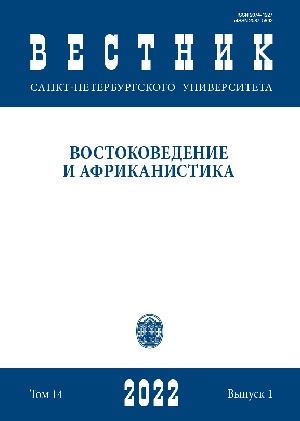Strategies of Cultural and Pragmatic Adaptation of Karachay-Balkarian Children Fairy Tales in Translation: The Limits of What is Possible and Permissible (Based on Translations of Karachay-Balkarian Fairy Tales into Russian and English)
DOI:
https://doi.org/10.21638/spbu13.2022.109Abstract
The relevance of this study is due to the growing interest in translations of fairy tales of small peoples and methods of linguistic and cultural translation of the content of the text in the process of translation. The work is interdisciplinary in nature and is at the intersection of cultural linguistics, folklore studies, comparative linguistics, and translation. The aim of the work is to determine how information about the values of the Karachay-Balkarian linguoculture is verbalized in the texts of fairy tales in the Karachay-Balkarian language, as well as to analyze the advantages and disadvantages of strategies of linguocultural adaptation (explication or elimination of national color) of this type of text into Russian and English. To solve the set tasks, two complementary research methods were used: an introspective method, oriented to the process (the author’s translation of five Karachay-Balkarian fairy tales into English), and the traditional method of retrospective analysis for translation studies by comparing the originals of Karachay-Balkarian fairy tales and their published translations into Russian. The material for this study was the Collection of Karachay-Balkarian fairy tales and legends, the Collection of Karachay-Balkarian fairy tales (transl. by A. Alieva, A. Kholayev, 1983), the Collection of Karachay fairy tales (transl. by I. Rumyantseva, 1981), the Collection of folk tales of Balkarians and Karachays (transl. by A. Alieva, A. Kholayev, 2003). The novelty of the research lies in the fact that for the first time the Karachay-Balkarian fairy tale as a cultural narrative of the people is considered in the aspect of translation criticism. The translation of such tales is conditioned by both a culturally specific plot and the form that is its basis - cultural details, peculiarities of mentality, expressed in language and constituting a special axiological background of the Karachai-Balkarian fairy tale. When translating, a significant part of these formal elements can be neutralized by translators for the sake of children’s perception (use of analogues in the target text, omission, deliberate domestication of the source text), which, however, leads to the loss of the main thing - the national and cultural originality of the source text. When explicating the cultural characteristics, the translator makes the reader familiar with the national flavor of another culture, however, at the same time, some excessive culturally specific information is transferred into the target text, which can cause misunderstanding or distorted perception on the part of the child reader (for example, the topic of polygamy and the peculiarities of the distribution of roles in family). In this regard, a balanced approach to the choice of the optimal strategy for the cultural and pragmatic adaptation of fairy tale texts during translation is necessary: the translator’s decision to explicate or eliminate national cultural specificity is of a compromise nature.
Keywords:
strategies of cultural and pragmatic adaptation, Karachay-Balkarian fairy tales, cultural specifics of a text, value orientations of a culture
Downloads
References
Downloads
Published
How to Cite
Issue
Section
License
Articles of "Vestnik of Saint Petersburg University. Asian and African Studies" are open access distributed under the terms of the License Agreement with Saint Petersburg State University, which permits to the authors unrestricted distribution and self-archiving free of charge.





